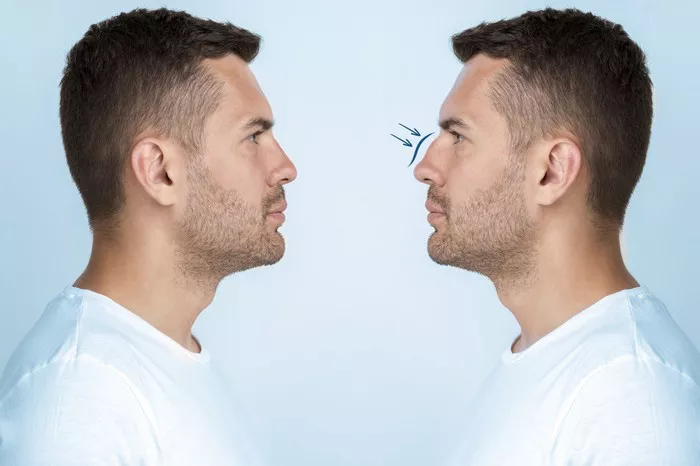Rhinoplasty, commonly known as a nose job, is a popular cosmetic surgery aimed at reshaping and enhancing the appearance of the nose. While the primary focus of this procedure is the nose itself, many patients wonder if a rhinoplasty can have an impact on their smile as well. This article delves into the relationship between rhinoplasty and smiles, exploring whether and how the surgery may affect the way a person smiles.
Understanding Rhinoplasty:
Before diving into the potential effects on smiles, it is essential to grasp the basics of rhinoplasty. This surgical procedure involves making changes to the nose’s bone, cartilage, or skin, and it can be done for both cosmetic and functional reasons. The primary objectives of rhinoplasty are to improve the nose’s proportion, symmetry, and overall appearance, while addressing issues such as breathing difficulties or structural abnormalities.
The Nose-Smile Connection:
The connection between the nose and smile is not direct, as the muscles involved in smiling are primarily located around the mouth and cheeks. Thus, altering the shape of the nose itself should not directly impact a person’s ability to smile. However, some indirect factors may influence the perceived changes in a patient’s smile following rhinoplasty.
Facial Harmony:
A well-performed rhinoplasty can enhance facial harmony by creating better balance among facial features. When the nose is in better proportion to the rest of the face, it may lead to an overall more aesthetically pleasing appearance, potentially boosting a person’s self-confidence. As a result, patients may feel more at ease and more likely to smile more frequently.
Confidence and Expression:
People often seek rhinoplasty to address aesthetic concerns that may have caused self-consciousness or hindered facial expressions. By correcting nasal irregularities, patients may gain newfound confidence in their appearance, leading to more relaxed and natural smiles. This boost in self-esteem can positively affect their overall demeanor and willingness to smile openly.
Breathing Improvement:
In cases where rhinoplasty aims to address functional issues, such as a deviated septum or nasal obstruction, the surgery can significantly improve breathing. Better airflow can result in less mouth breathing, contributing to an enhanced, genuine smile.
Considerations:
Despite the potential positive effects on smiles, it is crucial for patients to have realistic expectations regarding rhinoplasty outcomes. While the surgery can enhance facial harmony and self-confidence, it is not a direct means to change one’s smile per se.
Patients should openly communicate with their plastic surgeon about their desires and concerns regarding the procedure. A skilled surgeon will be able to provide professional advice, manage expectations, and customize the rhinoplasty to achieve the best possible results for each individual patient.
Conclusion:
In conclusion, while rhinoplasty directly affects the nose’s appearance and functionality, it can have some indirect effects on a person’s smile. Improved facial harmony, increased self-confidence, and better breathing can contribute to a more relaxed and natural smile. However, it is vital for patients to understand that a rhinoplasty’s primary goal is not to alter the smile but to enhance the overall facial aesthetic. To achieve the best results, it is crucial to consult with a qualified and experienced plastic surgeon and communicate openly about expectations and goals for the procedure.

